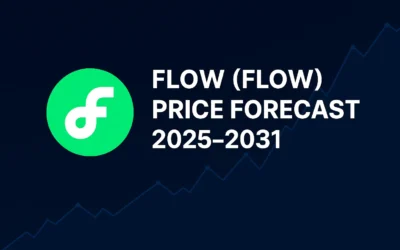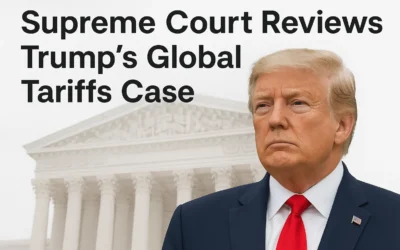In an era where artificial intelligence (AI) tools like ChatGPT generate human-like responses and shape public discourse, a provocative question arises: could AI indirectly challenge the authority of central banks in controlling the money supply? While this idea may seem speculative, the intersection of technology, information, and economic systems demands closer examination. This blog post explores the roles of central banks, the influence of AI, and the potential for tools like ChatGPT to impact monetary dynamics indirectly.
The Role of Central Banks in Money Supply
Central banks, such as the Federal Reserve or the Bank of Japan, are the architects of monetary policy. They regulate the money supply—measured as M1 (cash and checking accounts) or M2 (M1 plus savings)—through tools like:
- Interest Rates: Lower rates stimulate borrowing and spending, while higher rates cool economic activity.
- Open Market Operations: Buying bonds injects money into the economy; selling bonds withdraws it.
- Reserve Requirements: Adjusting the cash banks must hold influences lending capacity.
These mechanisms help central banks manage inflation, stabilize economies, and maintain trust in fiat currencies. Their authority stems from legal mandates and public confidence, ensuring they remain the primary arbiters of monetary policy.
The Rise of AI: ChatGPT’s Influence
Developed by OpenAI, ChatGPT and similar large language models (LLMs) are revolutionizing how information is shared and consumed. Capable of crafting persuasive narratives, explaining complex economic concepts, and delivering real-time financial advice, these AI tools wield significant influence. While they lack direct control over monetary policy, their ability to shape public perception and behavior could indirectly affect economic outcomes.
Here are three key ways AI could intersect with monetary dynamics:
- Shaping Public Sentiment and Expectations
Central banks rely on managing public and market expectations to guide economic behavior. If AI tools like ChatGPT spread narratives—accurate or misleading—about inflation, interest rates, or economic stability, they could alter consumer and investor actions. For instance, AI-generated content predicting hyperinflation might trigger panic buying or hoarding, increasing money velocity (the rate at which money circulates). This could mimic the effects of a larger money supply, complicating central banks’ efforts to maintain stability. - Promoting Decentralized Finance (DeFi) and Cryptocurrencies
AI can educate users about decentralized financial systems, such as Bitcoin, stablecoins, or DeFi platforms. While central banks control fiat currencies, widespread adoption of decentralized alternatives could challenge their monopoly. If AI-driven platforms accelerate crypto adoption by simplifying access or promoting its benefits, they might erode the dominance of central bank-controlled currencies over time. - Delivering Financial Advice at Scale
ChatGPT’s ability to provide personalized financial advice could influence how millions save, spend, or invest. If large numbers of users follow AI recommendations—for example, to divest from bonds or hoard cash—these collective actions could disrupt financial markets. Such shifts might undermine central banks’ ability to predict and manage economic trends, creating new challenges for monetary policy.
Can AI Control the Money Supply?
Directly, no. Central banks hold exclusive powers—issuing currency, setting reserve ratios, and adjusting discount rates—that AI systems like ChatGPT cannot replicate. These institutions operate within legal and regulatory frameworks that grant them unparalleled authority over monetary policy.
However, AI introduces indirect challenges by shaping information flows and economic decisions. Central banks operate in a world where perception often drives reality. If AI amplifies distrust in fiat currencies or promotes alternative financial systems, it could complicate efforts to maintain monetary control. For example, the 2021 GameStop stock surge, fueled by social media-driven sentiment, demonstrated how collective behavior can disrupt markets. AI could amplify such phenomena on a massive scale.
The emergence of central bank digital currencies (CBDCs) adds another layer. As central banks develop digital currencies, they may leverage AI to monitor transactions, detect fraud, or optimize policy decisions. Paradoxically, the same technology that poses challenges could enhance their capabilities, creating a complex interplay between AI and monetary authority.
The Human Element: Trust and Governance
Money is a social construct rooted in trust. Central banks derive their power from public confidence in their ability to manage economies. AI operates in the realm of influence, not governance, and lacks the legal authority to regulate or counteract economic trends. Even if ChatGPT encourages cryptocurrency adoption, central banks retain the power to regulate or integrate these systems.
Yet, trust is fragile. AI-generated misinformation—such as conspiracy theories about currency manipulation—could erode faith in central banks. To maintain legitimacy, central banks must embrace transparency, leverage technology to counter misinformation, and communicate effectively with the public.
Conclusion: A Symbiotic Future
The notion of ChatGPT “controlling” the money supply is speculative. Central banks remain the ultimate stewards of monetary policy, wielding tools and authority that AI cannot match. However, AI’s ability to shape public narratives, promote alternative financial systems, and influence economic behavior introduces indirect challenges to their dominance.
The future is likely one of symbiosis, not conflict. Central banks may harness AI for predictive analytics, fraud detection, or policy optimization while addressing the risks of misinformation. Meanwhile, tools like ChatGPT will empower individuals with financial knowledge, potentially democratizing economic decision-making.
For now, central banks hold firm control over the money supply. But in an AI-driven world, their success hinges on adapting to a landscape where technology, trust, and human behavior are increasingly intertwined. The question isn’t whether AI will control the money supply—it’s how central banks will navigate an era where AI shapes the economic narrative.
Stay informed with our free investment strategies! Investment Blog.









0 Comments